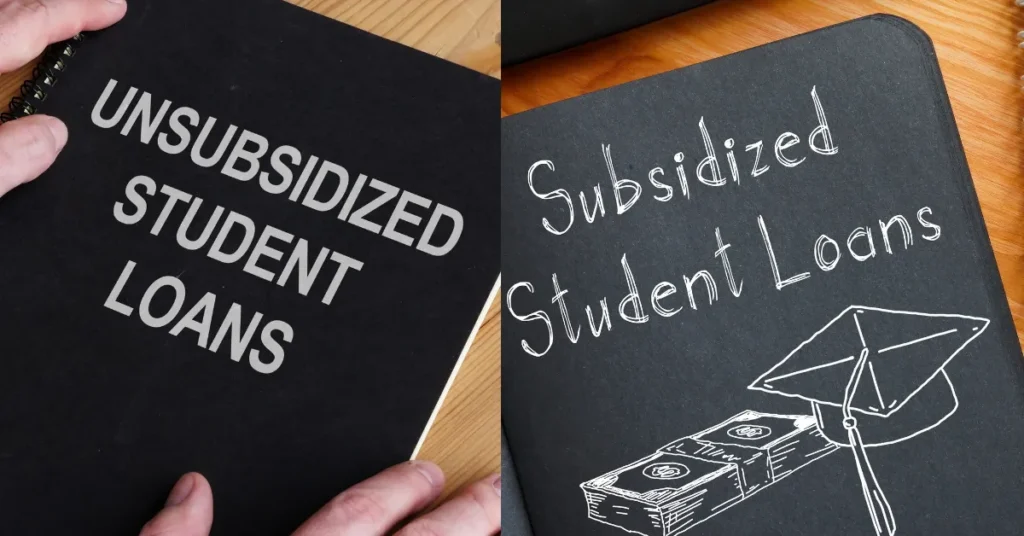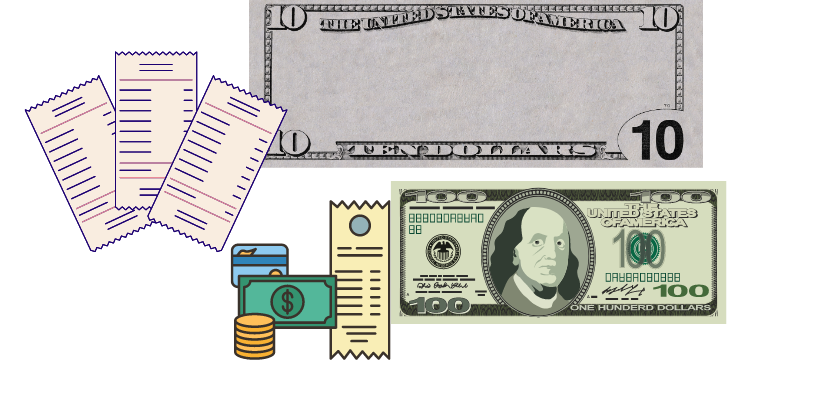Planning for College? Understanding Your Loan Options
College is an investment, and for many students, financial aid plays a crucial role. Federal loans are an ordinary form of aid, and understanding the difference between subsidized and unsubsidized loans is essential before taking on debt.
This guide will break down these loan types, highlighting their key features and helping you decide which might be right for you.

Note: What is the Free Application for Federal Student Aid (FAFSA)?
Before diving into specific loan options, it’s important to understand the FAFSA. This is a free federal form used to determine your eligibility for federal student aid, including grants, scholarships, and loans. Completing the FAFSA is crucial for accessing various financial aid resources.
Subsidized Loans: Benefits and Drawbacks
Subsidized loans are a need-based financial aid option offered by the federal government. Here’s a breakdown of their key characteristics:
Benefits:
- Interest Accrual During Deferment and Forbearance: The government covers the interest on your subsidized loan while you’re enrolled in school at least half-time, during the six-month grace period after graduation, and during deferment periods (when you qualify to temporarily postpone payments). This can significantly reduce your overall loan cost.
- Lower Fixed Interest Rates: Subsidized loans come with fixed interest rates set by the government, which are typically lower than those offered by private lenders.
- Protection During Hardship: Deferment and forbearance options offer temporary relief from loan payments during times of financial difficulty. In some cases, the government might even pay the interest that accrues during these periods for subsidized loans.
Drawbacks:
- Eligibility Requirements: To qualify for subsidized loans, you must demonstrate financial need based on your FAFSA application results.
- Loan Limits: The government sets annual and lifetime loan limits for subsidized loans, which may not cover your entire educational cost.
- Origination Fees: You may be charged an origination fee when you take out a subsidized loan.
Unsubsidized Loans: Flexibility with a Price
Unsubsidized loans offer more flexibility in borrowing amounts but come with different terms compared to subsidized loans:
Benefits:
- No Financial Need Requirement: Unlike subsidized loans, eligibility for unsubsidized loans isn’t based on financial need. This makes them a potential option for students who don’t qualify for subsidized loans or need additional funding.
- Higher Loan Limits: Unsubsidized loans typically offer higher borrowing limits than subsidized loans, potentially covering a larger portion of your educational expenses.
- Available for Undergraduate and Graduate Studies: You can apply for unsubsidized loans for both undergraduate and graduate programs.
Drawbacks:
- Interest Accrues from Day One: Interest on unsubsidized loans begins accruing from the day the loan is disbursed (when the funds are sent to your school). This means you’ll be responsible for paying interest on the entire loan amount, even during deferment and forbearance periods (unlike subsidized loans).
- Potential for Higher Total Loan Cost: Because interest accrues from the start with unsubsidized loans, the total amount you repay over time can be significantly higher compared to subsidized loans.
- No Interest Protection During Hardship: The government doesn’t cover interest payments during deferment or forbearance periods for unsubsidized loans.
Choosing Between Subsidized and Unsubsidized Loans
If you qualify for a subsidized loan, it’s generally the more favorable option due to the government’s assistance with interest payments during deferment and forbearance. However, subsidized loans have lower borrowing limits. If you need more funding or don’t qualify for subsidized loans due to financial aid packaging, unsubsidized loans can be a consideration.
| Subsidized | Unsubsidized | |
| How to Qualify | Demonstrate financial need | Fill out FAFSA |
| What You Can Borrow | Max of $23,000 | $57,500 for undergraduates $138,500 for graduate |
| What Happens to Interest? | Education Department pays interest | Interest accrues |
| Grace Period | 6-month grace period | 6-month grace period |
| Who can borrow | Undergraduate students only | Undergraduate and graduate or professional degree students |
| 2024 interest rates | Undergraduate Students: 5.50% Graduate Students: 7.05% | Undergraduate Students: 5.50% Graduate Students: 7.05% Direct PLUS Loans for Parents: 8.05% |
Important Note: These rates only apply to federal student loans disbursed between July 1, 2023, and June 30, 2024. The rates for the 2024-2025 award year (starting July 1, 2024) will be announced by the Department of Education closer to that date.
Exploring Alternatives of Subsidized and Unsubsidized Loans
Federal loans are a good starting point, but you might also consider:
- PLUS Loans: These loans are available to graduate and professional students, as well as parents of dependent undergraduate students. They typically have higher interest rates than subsidized or unsubsidized loans and require a credit check.
- Private Loans: Private lenders offer loans with varying interest rates and terms. While they might provide greater flexibility in borrowing amounts, they often come with higher interest rates and stricter repayment terms compared to federal loans.
Carefully evaluate all options, considering interest rates, repayment terms, and potential risks before making a decision.
Maximizing Your Financial Aid
- Carefully Review Your Financial Aid Package: Your school’s financial aid office will provide you with a financial aid package outlining the types and amounts of aid you qualify for, including grants, scholarships, and loans.
- Compare Loan Options: Analyze the interest rates, repayment terms, and eligibility requirements of different loan types before accepting them.
- Borrow Only What You Need:
- Minimize Debt Burden: It’s wise to borrow only what you absolutely need to cover your educational expenses. Consider living frugally, exploring scholarship and grant opportunities, and taking advantage of work-study programs to minimize your reliance on loans.
- Develop a Repayment Plan: Before accepting any loans, create a realistic budget and develop a repayment plan to ensure you can comfortably manage your loan payments after graduation.
Remember, federal student loans generally offer better interest rates and repayment terms compared to private loans. However, any loan adds to your debt burden. So, make informed decisions, borrow strategically, and prioritize scholarships and grants to minimize your reliance on loans and take help with this Difference Between Subsidized and Unsubsidized Loans article.
FAQs: Difference Between Subsidized and Unsubsidized Loans
Yes! Unlike some private loans, federal student loans do not have prepayment penalties. This means you can make additional payments towards your principal without any added fees, potentially saving you money on interest in the long run.
- Work-study programs: Earn money while you learn through on-campus jobs that often fit your class schedule.
- Freelancing: Offer your skills like writing, editing, graphic design, or coding online to earn extra income.
- House-sitting or pet-sitting: Earn money while providing a valuable service to others.
- Local scholarships and grants: Many smaller, community-based organizations offer scholarships that may go unnoticed. Research and apply for these opportunities.
- Consider living frugally: Downsize your living arrangements, cook more meals at home, and find free or low-cost entertainment options.
While student loans can help finance your education, they also come with long-term implications. Consider these potential consequences:
- Delayed major life milestones: Loan repayments can delay buying a house, starting a family, or pursuing further education.
- Limited career choices: High debt can restrict your career options by making you prioritize higher-paying jobs over your ideal career path.
- Impact on credit score: Missed or late loan payments can negatively affect your credit score, making it harder to secure future loans like mortgages or car loans.
- Federal Student Aid website: Provides information on repayment options, loan forgiveness programs, and consolidation options.
- National Foundation for Credit Counseling (NFCC): Offers free financial counseling and resources to help manage student loan debt.
- Your loan servicer: Contact your loan servicer for questions about your specific loan terms, repayment plans, and hardship options.


